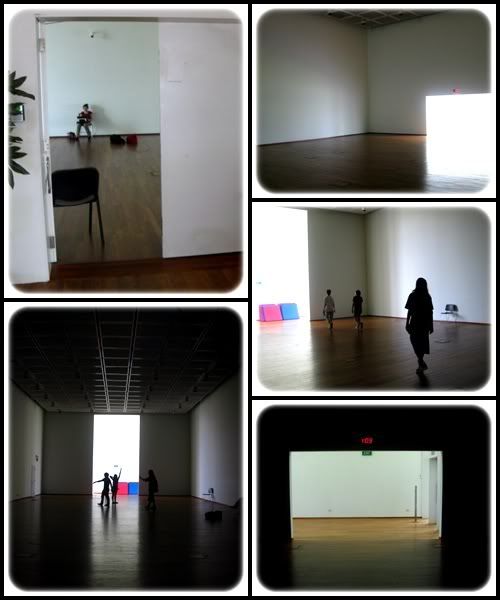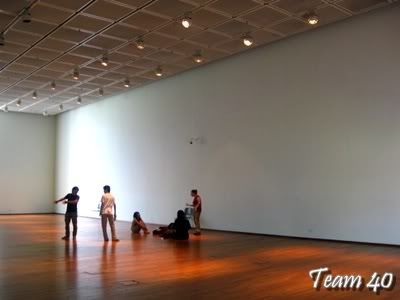
Title : Reflection-She/Me
From : http://www.flickr.com/photos/22043902@N08/2346480038/in/pool-99598924@N00











 Wolfgang Amadeus Mozart (IPA: [ˈvɔlfgaŋ amaˈdeus ˈmoːtsart], full name Johann Chrysostom Wolfgang Amadeus Mozart [1] (27 January 1756 – 5 December 1791) was a prolific and influential composer of the Classical era. His more than 600 compositions include works widely acknowledged as pinnacles of symphonic, concertante, chamber, piano, operatic, and choral music, and he is among the most enduringly popular of classical composers. Mozart's music, like Haydn's, stands as an archetypal example of the Classical style. His works spanned the period during which that style transformed from one exemplified by the style galant to one that began to incorporate some of the contrapuntal complexities of the late Baroque, complexities against which the galant style had been a reaction. Mozart's own stylistic development closely paralleled the development of the classical style as a whole. In addition, he was a versatile composer and wrote in almost every major genre, including symphony, opera, the solo concerto, chamber music including string quartet and string quintet, and the piano sonata. While none of these genres were new, the piano concerto was almost single-handedly developed and popularized by Mozart. He also wrote a great deal of religious music, including masses; and he composed many dances, divertimenti, serenades, and other forms of light entertainment.
Wolfgang Amadeus Mozart (IPA: [ˈvɔlfgaŋ amaˈdeus ˈmoːtsart], full name Johann Chrysostom Wolfgang Amadeus Mozart [1] (27 January 1756 – 5 December 1791) was a prolific and influential composer of the Classical era. His more than 600 compositions include works widely acknowledged as pinnacles of symphonic, concertante, chamber, piano, operatic, and choral music, and he is among the most enduringly popular of classical composers. Mozart's music, like Haydn's, stands as an archetypal example of the Classical style. His works spanned the period during which that style transformed from one exemplified by the style galant to one that began to incorporate some of the contrapuntal complexities of the late Baroque, complexities against which the galant style had been a reaction. Mozart's own stylistic development closely paralleled the development of the classical style as a whole. In addition, he was a versatile composer and wrote in almost every major genre, including symphony, opera, the solo concerto, chamber music including string quartet and string quintet, and the piano sonata. While none of these genres were new, the piano concerto was almost single-handedly developed and popularized by Mozart. He also wrote a great deal of religious music, including masses; and he composed many dances, divertimenti, serenades, and other forms of light entertainment. More important is the influence Mozart had on later composers through the example of his works. Following the surge in his reputation after his death, the study of works by Mozart became part of the training of every classical musician, and has been ever since. Ludwig van Beethoven, whose life overlapped with Mozart's, seems to have been particularly strongly influenced by him. Beethoven became closely acquainted with Mozart's work as a teenager (he is thought to have played Mozart's operas in the court orchestra in Bonn).[75] He traveled to Vienna in 1787 in the hope (unfulfilled) of studying with Mozart. It is thought that some of Beethoven's works have direct models in comparable works by Mozart. Beethoven also wrote cadenzas (WoO 58) to Mozart's D minor piano concerto K. 466.
More important is the influence Mozart had on later composers through the example of his works. Following the surge in his reputation after his death, the study of works by Mozart became part of the training of every classical musician, and has been ever since. Ludwig van Beethoven, whose life overlapped with Mozart's, seems to have been particularly strongly influenced by him. Beethoven became closely acquainted with Mozart's work as a teenager (he is thought to have played Mozart's operas in the court orchestra in Bonn).[75] He traveled to Vienna in 1787 in the hope (unfulfilled) of studying with Mozart. It is thought that some of Beethoven's works have direct models in comparable works by Mozart. Beethoven also wrote cadenzas (WoO 58) to Mozart's D minor piano concerto K. 466.



















